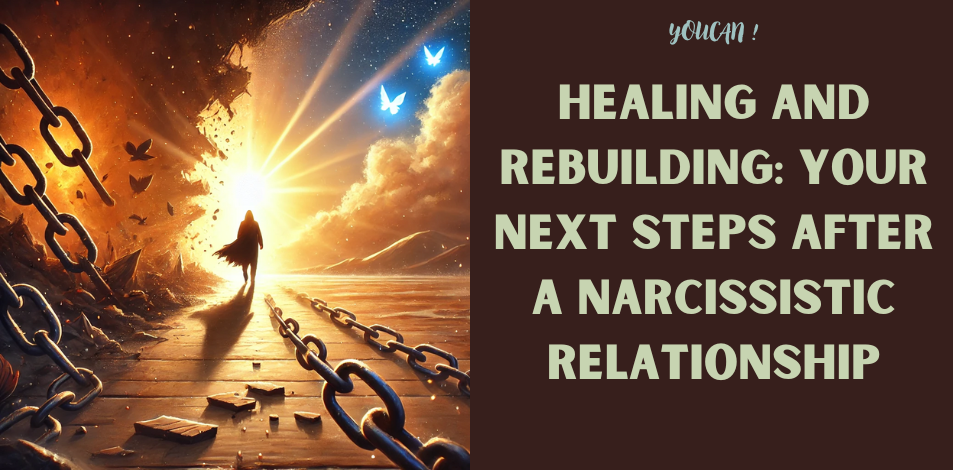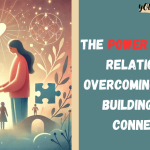
Breaking free from a narcissistic relationship is no easy feat. It takes courage, resilience, and a commitment to prioritizing your well-being. If you’ve recently left a relationship like this, you may feel a mix of relief, confusion, and pain. These feelings are normal, and it’s important to understand that recovery is not only possible—it’s completely within your grasp.
This guide will walk you through practical steps to heal and rebuild your life after experiencing a narcissistic relationship. Let’s focus on empowering you with the tools, insights, and strategies to regain your confidence and inner peace.
UnderstandingTheConsequences
The effects of a narcissistic relationship often linger long after it ends. You may experience self-doubt, a low sense of worth, or emotional exhaustion. This is because narcissistic relationships are often characterized by manipulation, manipulation, and emotional dependency. Recognizing these patterns is the first step in reclaiming your life.
This experience does not define you. It is a chapter in your story, not the entire book. Healing begins with acknowledging the pain and committing to moving forward.
Step 1: Give yourself permission to grieve
Even if the relationship was toxic, it’s normal to grieve the loss of what you thought could have been. Allow yourself to process your feelings without judgment. Suppressing your feelings only prolongs the healing process.
Journal to explore your thoughts. Talk to a trusted friend or therapist. Cry when you need to. Grief is not a sign of weakness—it’s an essential part of letting go.
Step 2: Establish No Contact or Low Contact
Narcissists often try to maintain control even after the relationship ends. To protect yourself, set clear boundaries. For most people, this means “no contact”—blocking their number, email, and social media profiles.
If you share children or professional connections, low contact is a more realistic approach. Keep communication to essential topics and avoid engaging in emotional conversations. This creates space for you to heal without being drawn back into the narcissist’s manipulative tactics. Step 3: Rebuild Your Self-Esteem
Narcissistic partners often erode your confidence in maintaining control. Rebuilding your self-esteem is crucial to recovery. Start by celebrating small victories. Did you manage to get through the day without thinking about them? That’s progress.
Practice affirmations that reinforce your worth. Surround yourself with supportive people who lift you up. Engage in activities that make you feel empowered and strong, whether that’s trying a new hobby or revisiting an old passion.
Step 4: Seek Professional Support
Healing from a narcissistic relationship can be complicated. Therapists trained in trauma recovery can help you unpack the emotional damage and provide coping strategies. Cognitive behavioral therapy is particularly effective at addressing negative thought patterns.
Support groups can also be invaluable. Hearing others share their experiences can validate your feelings and remind you that you’re not alone. Online communities and forums offer another layer of connection and understanding.
Step 5: Rediscover Your Identity
Narcissistic relationships often leave you feeling like a shadow of yourself. Rediscovering who you are is one of the most rewarding aspects of recovery.
Start by reconnecting with old interests or exploring new ones. Volunteer for a cause you care about, take a class, or travel to a place you’ve always wanted to visit. This is your time to define who you are outside of the relationship.
Step 6: Build a Self-Care Routine
Self-care is more than bubble baths and face masks—although those can help, too. It’s about nourishing your body, mind, and spirit.
Focus on eating nutritious meals, getting regular exercise, and maintaining a consistent sleep schedule. Meditation, yoga, or even deep breathing exercises can help you manage anxiety and stress. Journaling is another powerful tool for reflecting on your progress and setting intentions for the future.
Step 7: Learn to Recognize Red Flags
Healing isn’t just about moving forward—it’s also about preparing yourself to avoid similar situations in the future. Reflect on red flags that you may have ignored in your past relationship. Common warning signs include excessive charm, lack of empathy, and controlling behavior masquerading as “caring.”
Educating yourself about the dynamics of healthy relationships empowers you to make better choices and set boundaries that protect your emotional well-being.
Step 8: Develop Healthy Relationships
As you recover, it’s important to surround yourself with people who respect and value you. Healthy relationships are built on mutual trust, empathy, and open communication.
Start by strengthening bonds with friends and family members who have always been there for you. When you’re ready to date again, take it slow. Prioritize emotional compatibility over external attributes and remember that you deserve kindness and respect in every relationship.
Step 9: Embrace Forgiveness—For Yourself
Forgiveness doesn’t mean excusing the narcissist’s behavior. Instead, it’s about letting go of the grip his actions had on you. Most importantly, forgive yourself for any perceived wrongdoings or staying longer than you feel you should have.
You did the best you could with the knowledge and resources you had at the time. Now, you’re taking steps to reclaim your power, and that’s what really matters.
Step 10: Celebrate Your Progress
Healing isn’t linear. There will be days when you feel like you’ve taken ten steps forward and other days when you feel like you’ve taken a step back. Be gentle with yourself through these ups and downs.
Celebrate accomplishments, no matter how small. Whether it’s a week of no contact or a moment of genuine joy, every step forward is worth recognizing.
Why Healing Is Worth It
The journey of healing from a narcissistic relationship is difficult, but it is also transformative. As you rebuild your life, you will discover a new sense of strength and self-awareness.
You are capable of creating a life filled with authentic connection, joy, and purpose. The scars of your experience do not define you—they are simply evidence of your resilience.
Final Thoughts
Healing from a narcissistic relationship is a deeply personal journey, but you don’t have to go through it alone. By taking intentional steps to grieve, rebuild, and rediscover yourself, you can emerge stronger and more confident than ever before.
Every day is a new opportunity to choose yourself. Embrace the process, trust your progress, and remember that you are worthy of love, happiness, and peace.
Read Also: 5 Ways Your Narcissistic Partner is Sapping Your Joy




